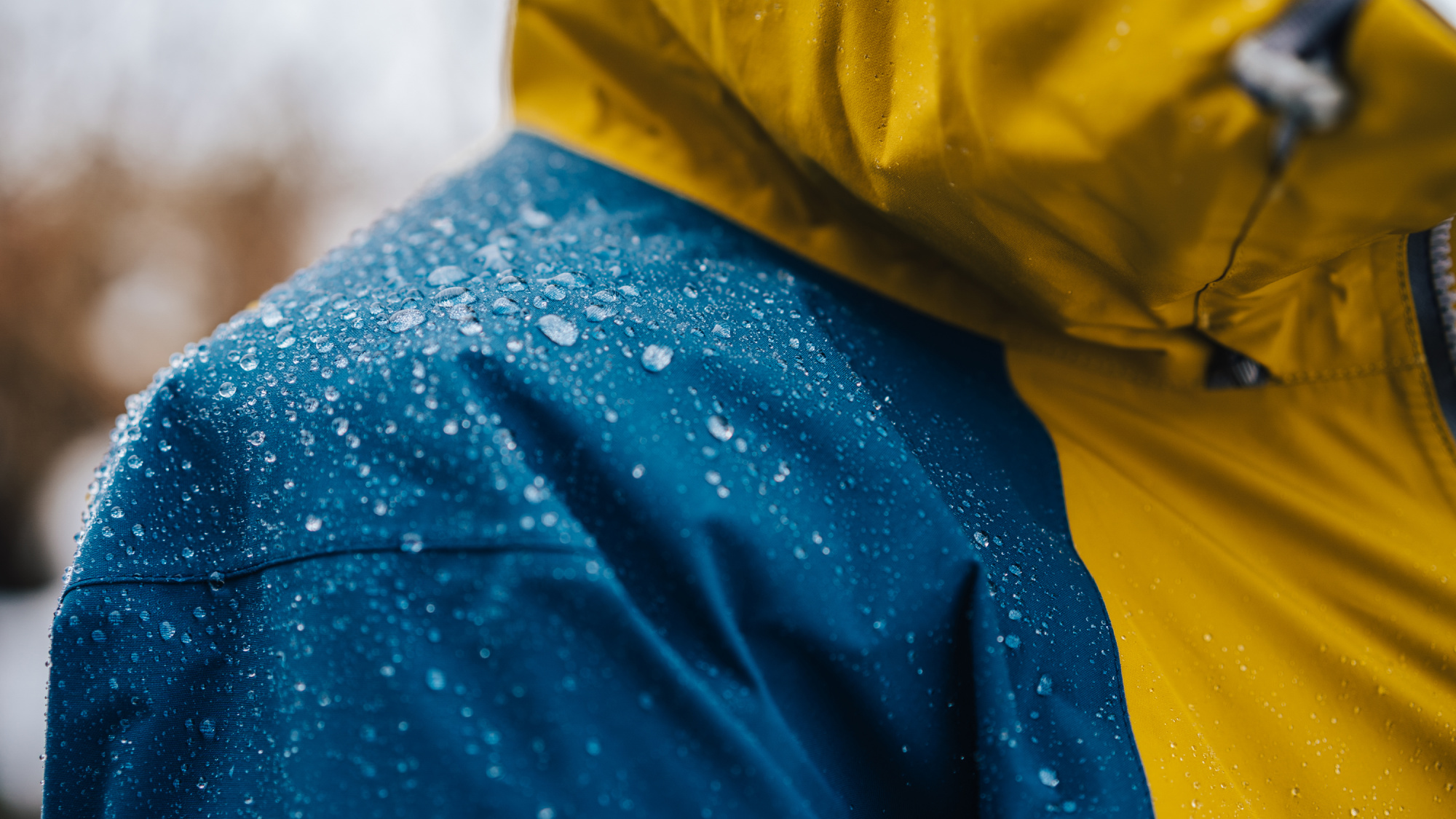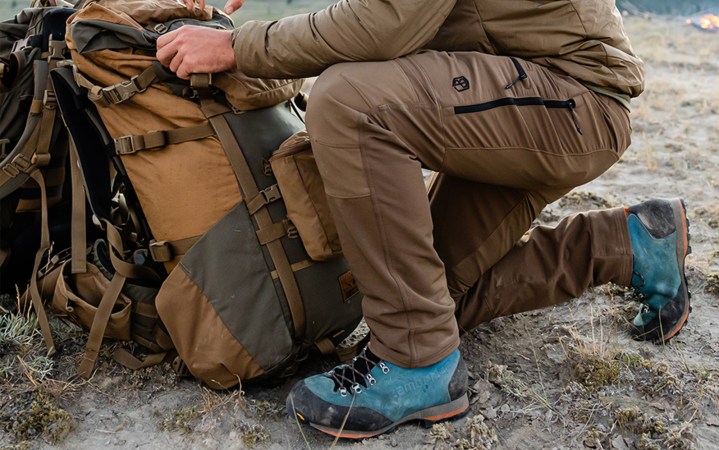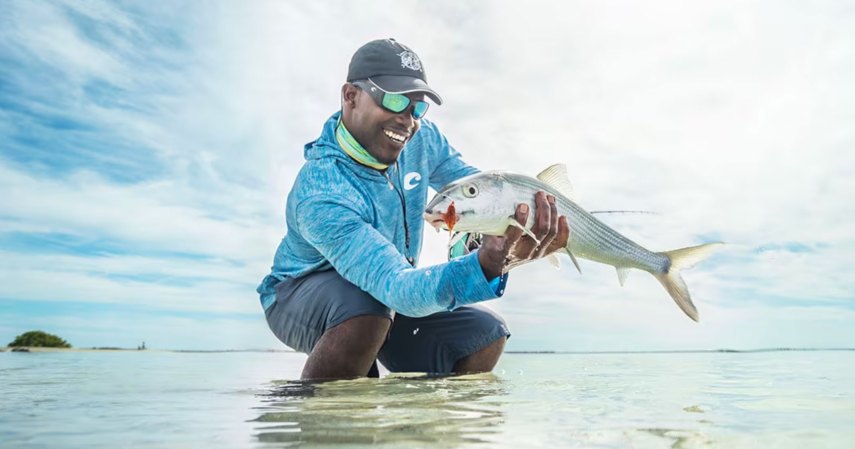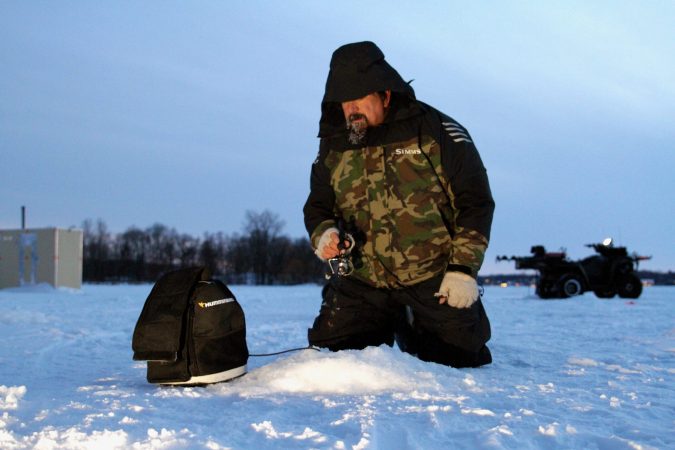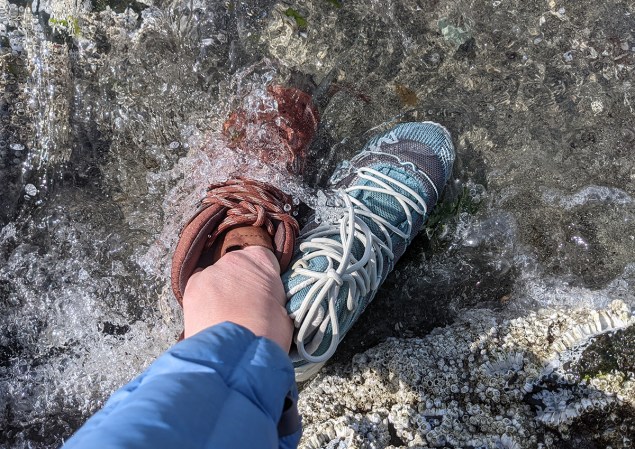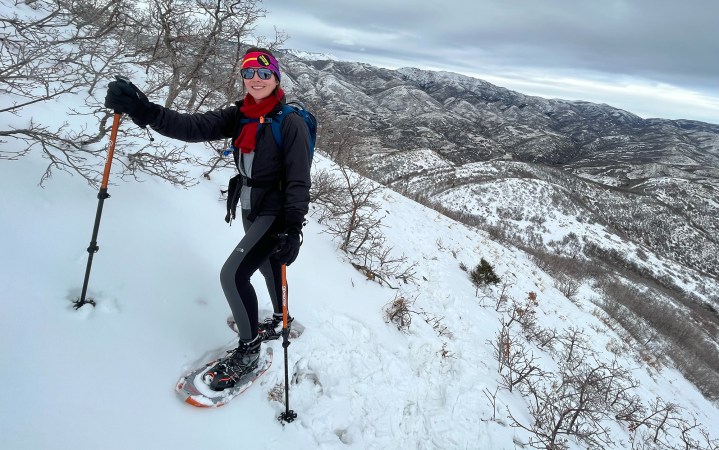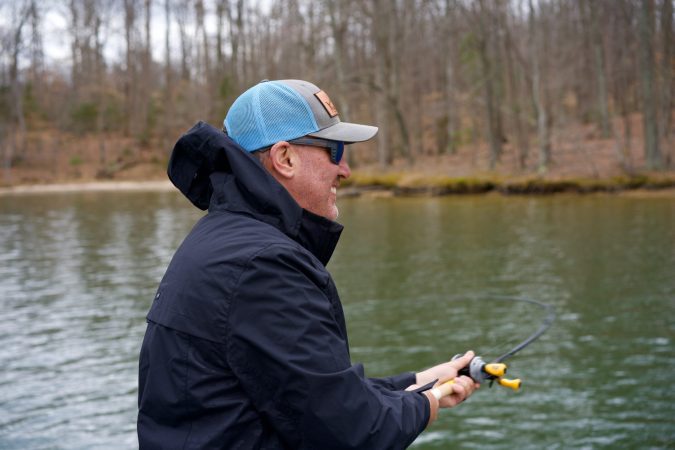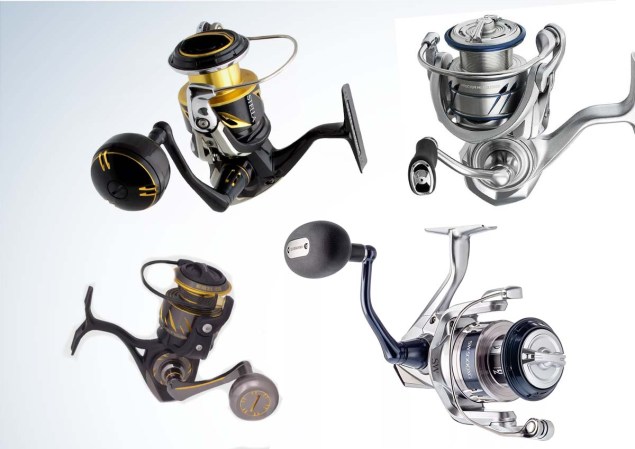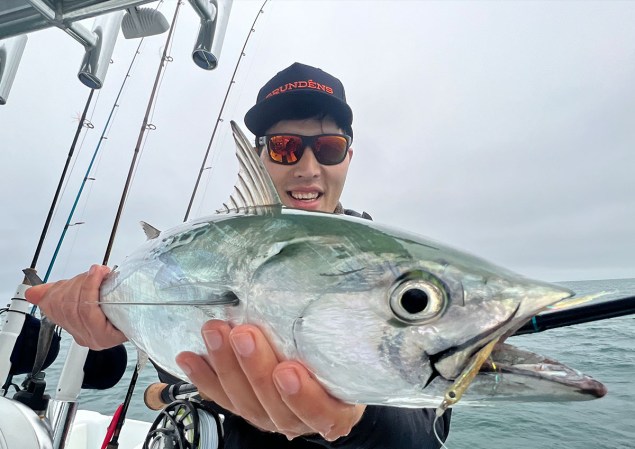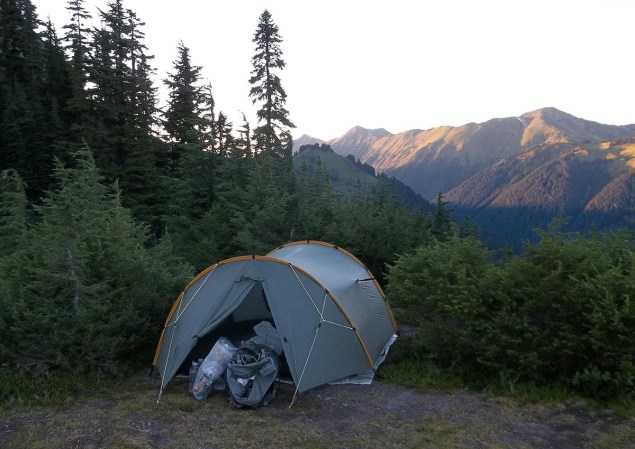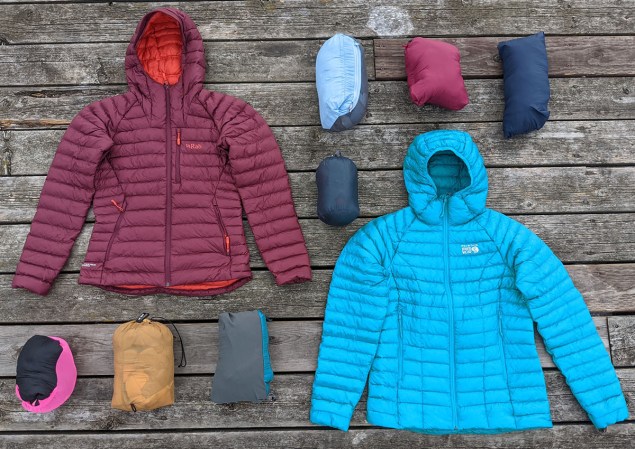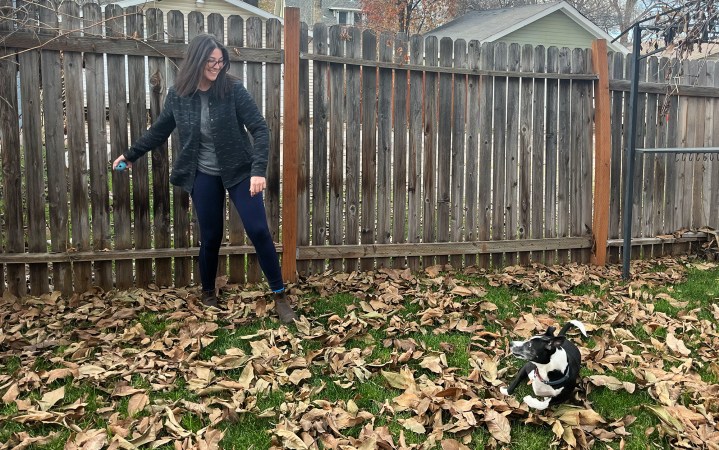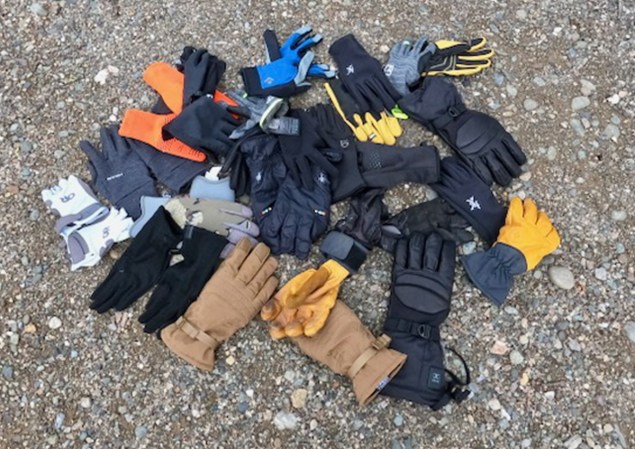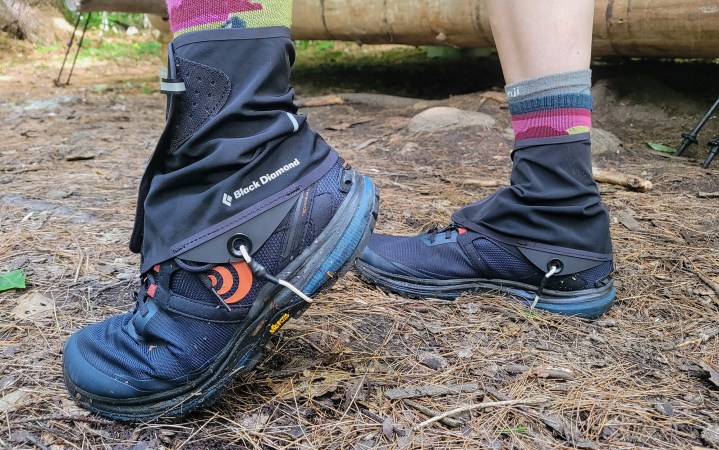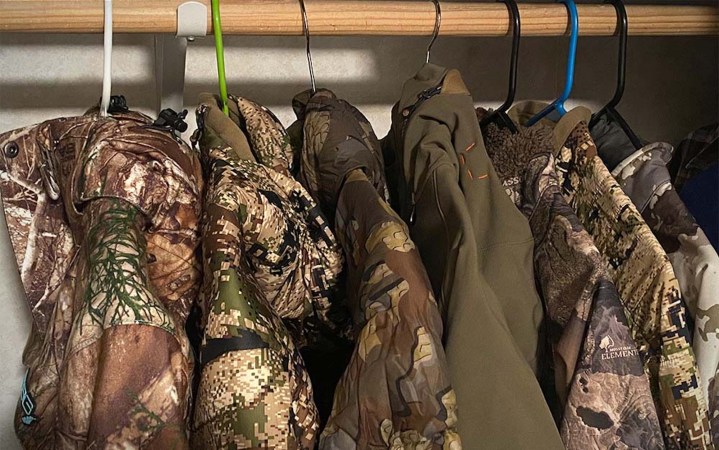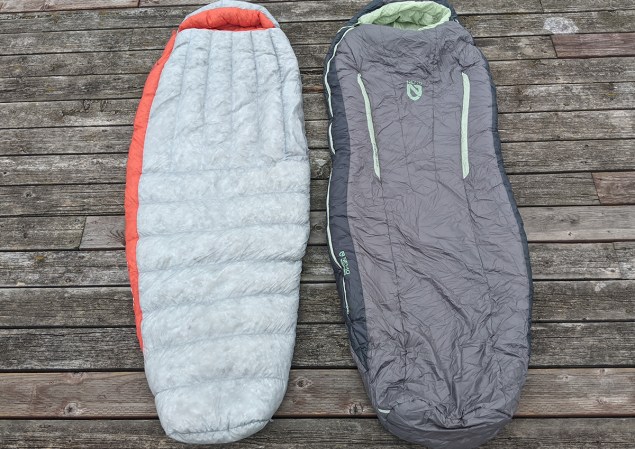We may earn revenue from the products available on this page and participate in affiliate programs. Learn More ›
All outdoorsmen and women need a reliable layer to keep water out. Maybe it’s because of a light drizzle on an early-morning walk, or an afternoon downpour on a hike, or a damp mist that just keeps hanging on. Either way, any outdoor activity becomes less fun when you’re wet and chilled. Luckily, there’s a wide variety of waterproof and water resistant gear out there. But what are the real pros and cons between water resistant vs waterproof gear?
You’ll need to ask yourself a few questions before choosing which kind of gear you want. Do you need something truly waterproof, or do you want something a bit more breathable? Could you get away with a tightly woven fabric, or will you be inundated with rain for days? And with all the products out there marketed as rain gear, what is the best for your situation? I talked with Matt Dwyer, head of Product Impact and Innovation at Patagonia who also spent years working for Gore-Tex, to explain the differences between water resistant and waterproof and provide some advice on finding the best outer layer for you.
Water Resistant vs Waterproof
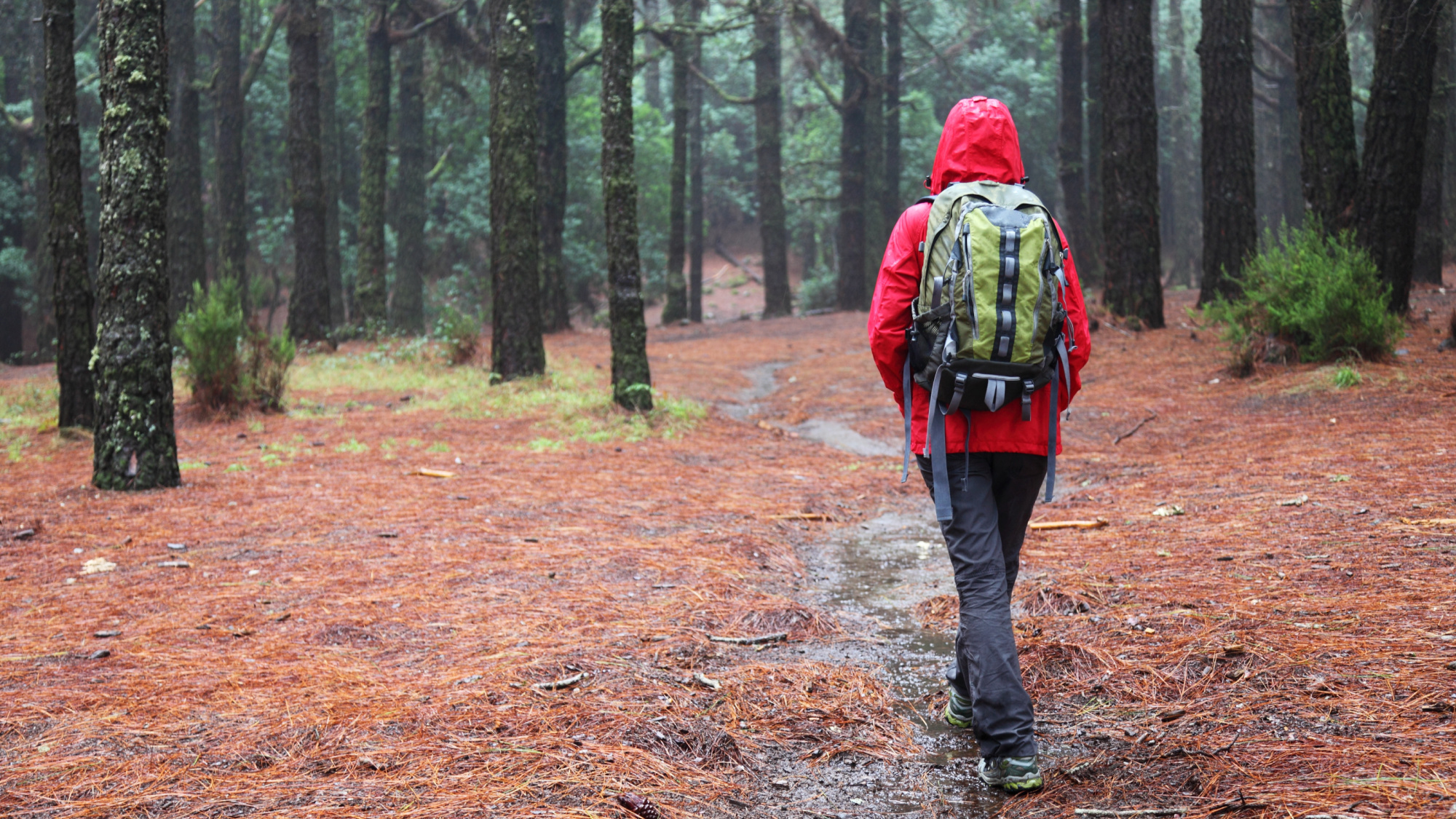
Maridav / Adobe Stock
At its most basic, waterproof means something that keeps the water off you. Water resistant means you won’t immediately get wet, but if it really starts to rain, you will. Where those lines meet—as in, what fabrics are actually waterproof and which ones are water resistant—becomes very blurry, very fast. What you need also depends almost as much on what you’re doing and in what conditions than it does the actual material. Sound complicated? Let us explain.
What Does Waterproof Mean?
Technically, lots of things are waterproof. Steel, for example, is waterproof, but you’re not likely to wear it, particularly not as a means of staying dry. Conversely, nothing is waterproof under every conceivable condition until the end of time.
Practical waterproof materials range from the plastic tarp of a poncho you bought at a gas station for $5 to the $399 Swiftcurrent Patagonia Wading Jacket with a whole range in between. But how long something is waterproof and in what conditions, and what sort of experience you would like to have, is where the decisions come in.
“Take something like our Houdini, which is not waterproof. It’s basically a windbreaker, but it’s reasonably water resistant. We don’t want the alpine climbing guide, who’s going to spend 160 days in the field this year, thinking that that’s good enough for him or her to use for their pursuits,” Dwyer says. “It all comes down to function and then the form comes from that.”
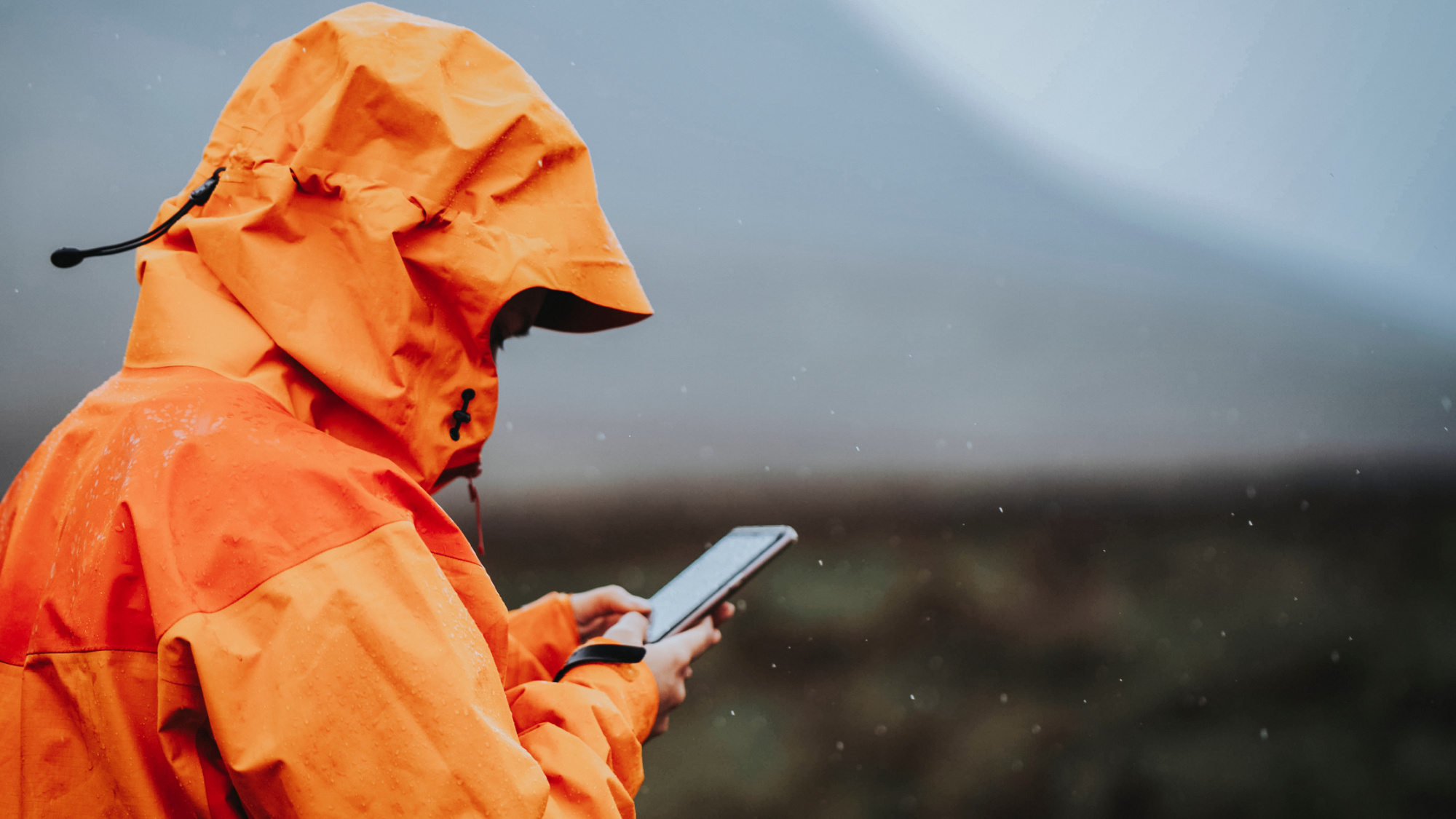
rawpixel.com / Adobe Stock
Think about that poncho. It will keep you dry in a flash rainstorm, and as long as you’re not moving too much, you’ll probably be fine. So if what you need is something to keep you dry in case of a quick storm, at, say, an outdoor concert, that is probably your cheapest route. If you plan to be moving at all, that poncho or its plastic equivalent of a raincoat, will leave you just as wet on the inside as you would have been without anything. While plastic does a great job keeping you dry, it doesn’t breathe, which means any perspiration from your body is trapped and soaks you and your clothes.
Plenty of companies make breathable waterproof fabrics, but even those vary tremendously. If you spend your winters climbing mountains to ski down them, you want something in a high-end line that is fitted and has the features and durability you need.
“Whereas something like our Torrentshell is that modestly priced, middle of the road jacket. We want to make sure that as many times as you wash it, as many times as you shove it in your backpack after you’ve ridden your bike to work, it’s not going to fall apart on you and get holes and leak.”
So while they’re all technically waterproof, how you use them will determine how well they work for you in the field.
Read Next: Best Waterproof Hiking Shoes
What Does Water-Resistant Mean?
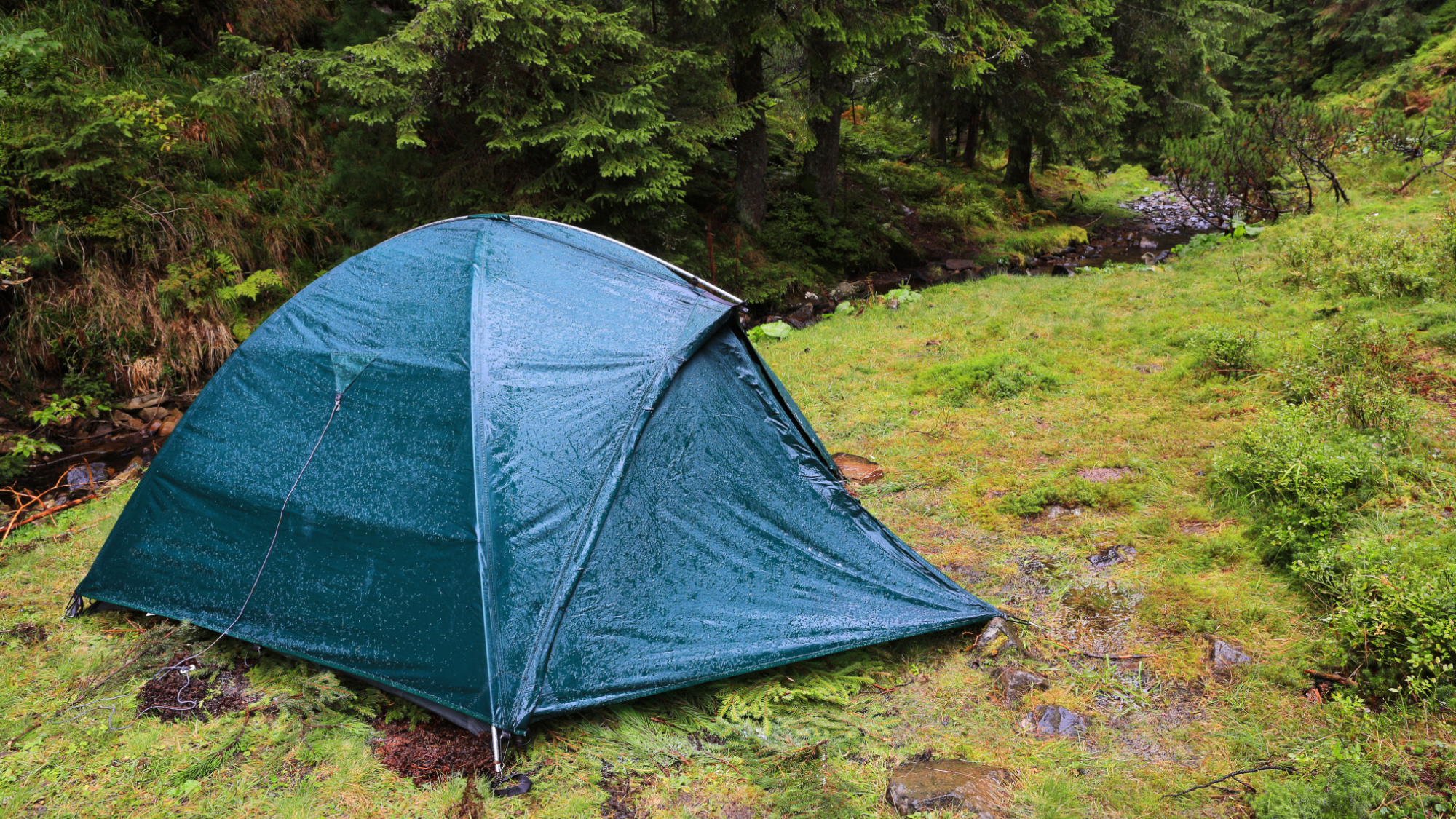
Pavlo Klymenko / Adobe Stock
If you thought there were a lot of options in the world of waterproof, just take a look at the list of fabrics called water resistant.
“You could have a nylon with a very light silicone coating on it that is going to be like 90 percent resistant, keeping you dry in most water exposures. But if it really starts to rain, or if you put a little pressure on it, water’s going to come through, and you’re gonna get wet,” Dwyer says.
This means a tightly woven wool can be water resistant. The outside of your puffy jacket could also be water resistant. Without a rain fly or footprint, your tent might even be water resistant. It won’t do you much good in a proper rain. But if you find yourself in a mist or light drizzle it might be plenty.
What Makes Fabric Waterproof?
In general, companies have two ways of making a material waterproof. One is to cover the outside with a durable water repellent (often called DWR) coating that makes water bead up and roll off. It works great for a time, but tends to fail over the long haul. The most tried-and-true waterproofing comes from the waterproof membrane in between two layers of fabric. Dwyer describes this method as a grilled cheese sandwich.
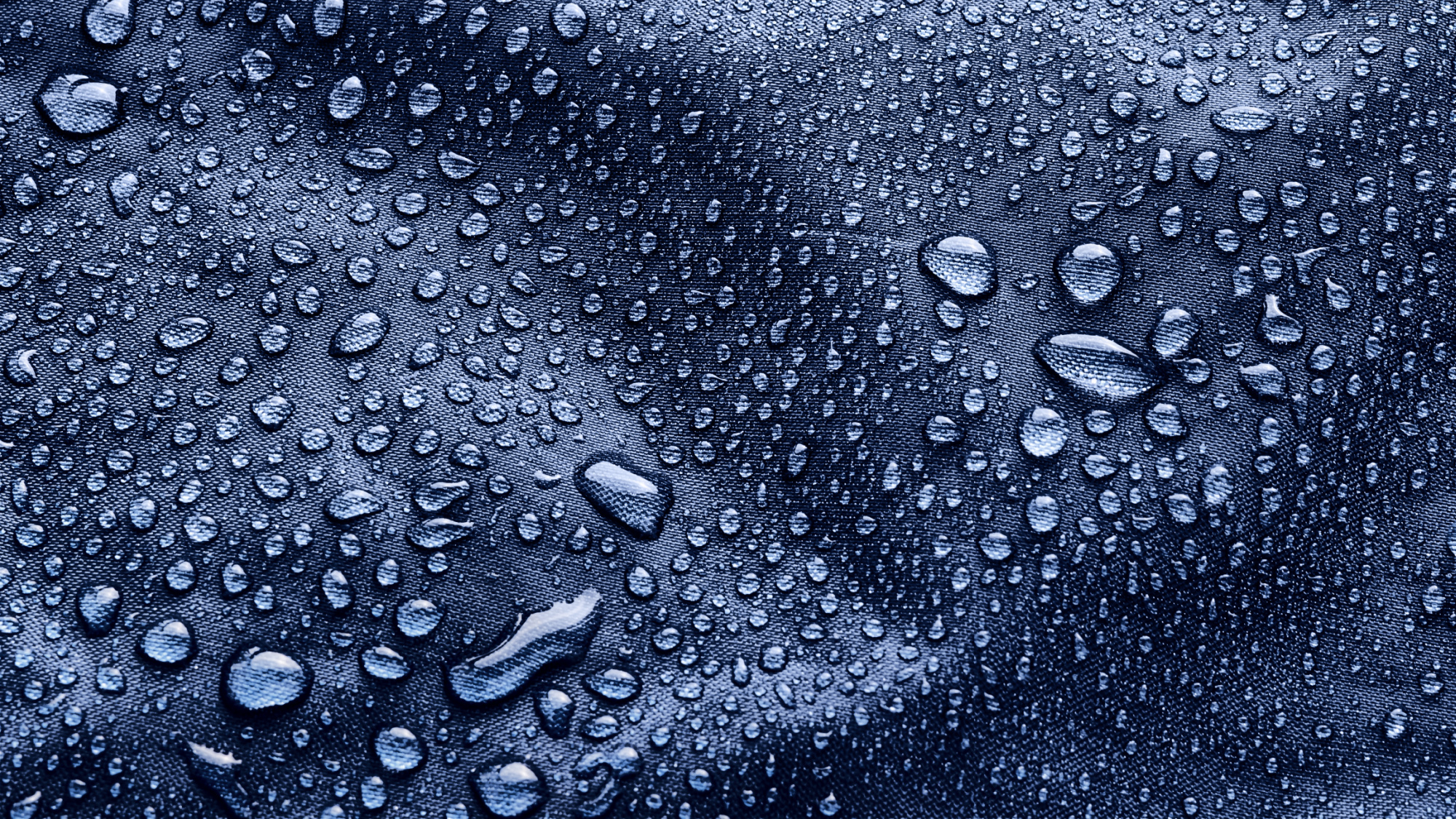
Kulbabka / Adobe Stock
The waterproof membrane is like the cheese, and it ensures that if water starts to leak through the outer coating, or the bread, it can’t get through to the inside.
“There’s dozens or hundreds of ways to construct that sandwich with different kinds of cheese, different membranes, and different types of breads,” he says.
Those technologies are what create waterproofing in a fabric while also allowing breathability. Until the advent of products like Gore-Tex, outdoor people used, and still use, fabrics like leather and waxed cotton. The idea of waxed cotton or leather is that the wax saturates any tiny pores or gaps in the material, sealing them off from the elements. They keep you dry but don’t allow any moisture to escape.
Read Next: Best Hunting Rain Gear
Best Water-Resistant Materials
The water-resistant category is a lot murkier and often includes fabrics with a really tight weave or materials that have been pressed or squished together to prevent any water from seeping in.
How to Choose the Best Water Resistant vs Waterproof Material
Activity
The first factor to determine whether you need something that is waterproof or water resistant is to think about what you’ll be doing. Are you going on a monthlong backpacking trip in the Pacific Northwest? Are you day hiking in the Southwest? Are you fishing day after day in Alaska, or do you just need something to throw in your pack to keep you dry if the rain comes? These are great questions to ask yourself, and depending on the answer will determine what you need.
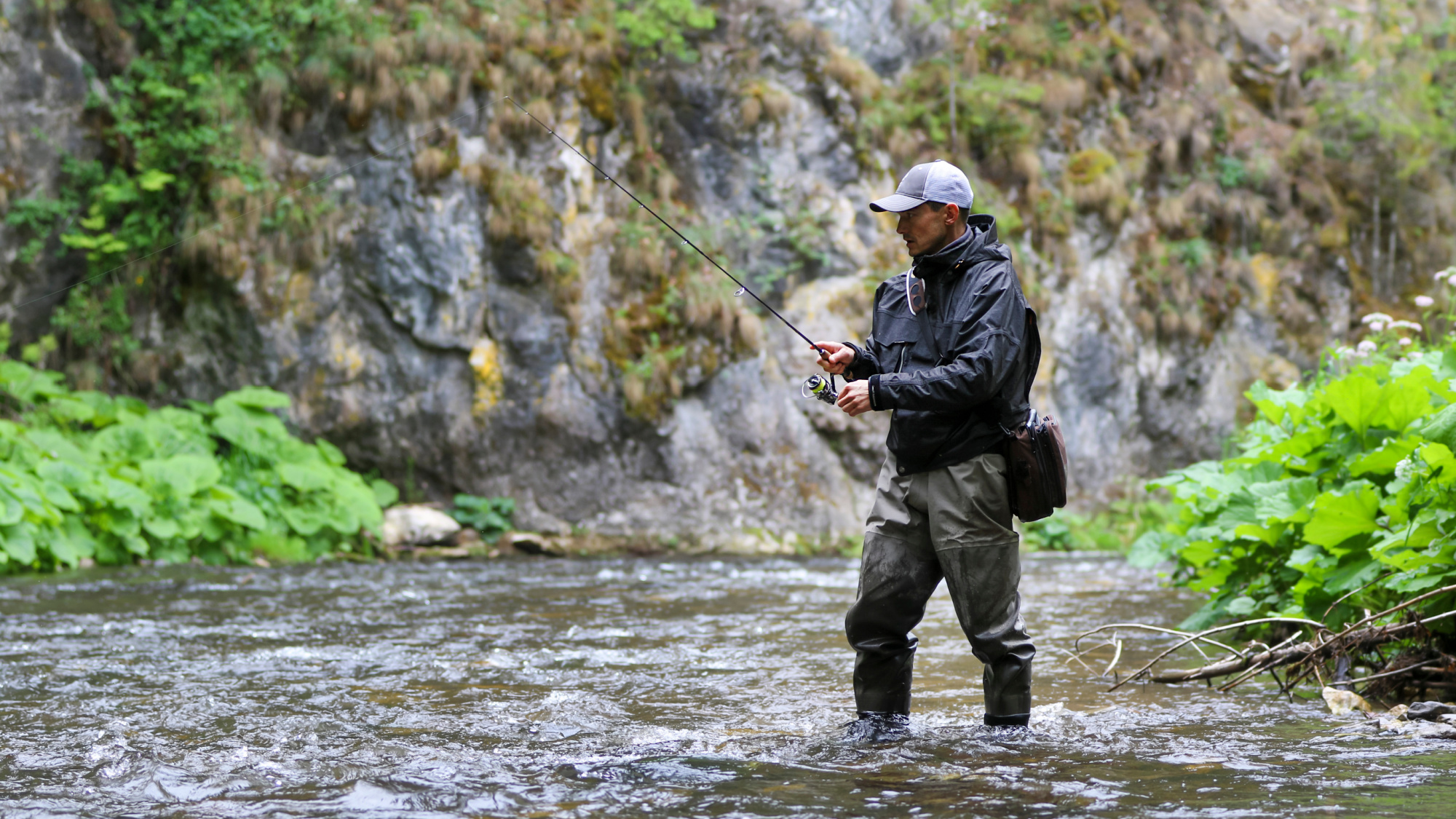
Michal / Adobe Stock
If you’re going to be backpacking, hiking, or moving around in consistent rain, you might need a nicer, more professional coat that will keep you dry in the rain but will also breathe to and won’t break down as quickly with heavy use. We recommend the Arctery’x Beta LT.
If you need a jacket for extreme conditions that won’t let you down, try the Grudens Neptune Jacket, and if you need a light shell to throw in your pack after an afternoon thunderstorm try the Montbell Versalite.
Read Next: Best Rain Jackets
Cost
The nicer the Gore-Tex, Pertex, Patagonia’s H2No, or North Face’s FutureLight, the more expensive a jacket will become. You’re going to pay extra for enhanced waterproofness coupled with breathability and longevity. If your budget is tight, consider checking out something like the Frogg Togg’s waterproof, breathable suits made of polypropylene.
Longevity
Is this a coat you will wear consistently, or will it probably only come out once or twice a year? Consider how often you will need it to perform its duty and buy accordingly.
Read Next: Best Waterproof Hiking Boots
Water Resistant vs Waterproof: FAQ
Should I wash my waterproof coats and pants?
If Dwyer could teach outdoor enthusiasts anything it would be to wash their waterproof clothes more frequently. You won’t wash the waterproofness off, in fact, you will likely bring it back to life. Sweat, dirt, and grime from outdoor activities seep into the fabric and break down the waterproofing. Washing it, even with a standard Tide detergent or, even better, a free and clear detergent, will keep it alive longer.
Can I enhance the waterproofing?
Washing waterproof loads with products like Storm Clothing Wash can bring extend waterproofing after periods of prolonged use.
What does 50m waterproof mean?
Few people understand what a measurement like 50m might mean, and Dwyer doesn’t blame them. It’s confusing. Put simply, it’s a standard used by manufacturers to show a level of waterproofness. The number equates to how much pressure from water the particular piece of fabric can handle. Think about it more as an engineering spec than a performance one, because most waterproof garments from companies like Patagonia will have numbers far higher than any pressure you’ll actually experience outside.
Read Next: Best Rain Gear for Fishing
Final Thoughts on Water Resistant vs Waterproof
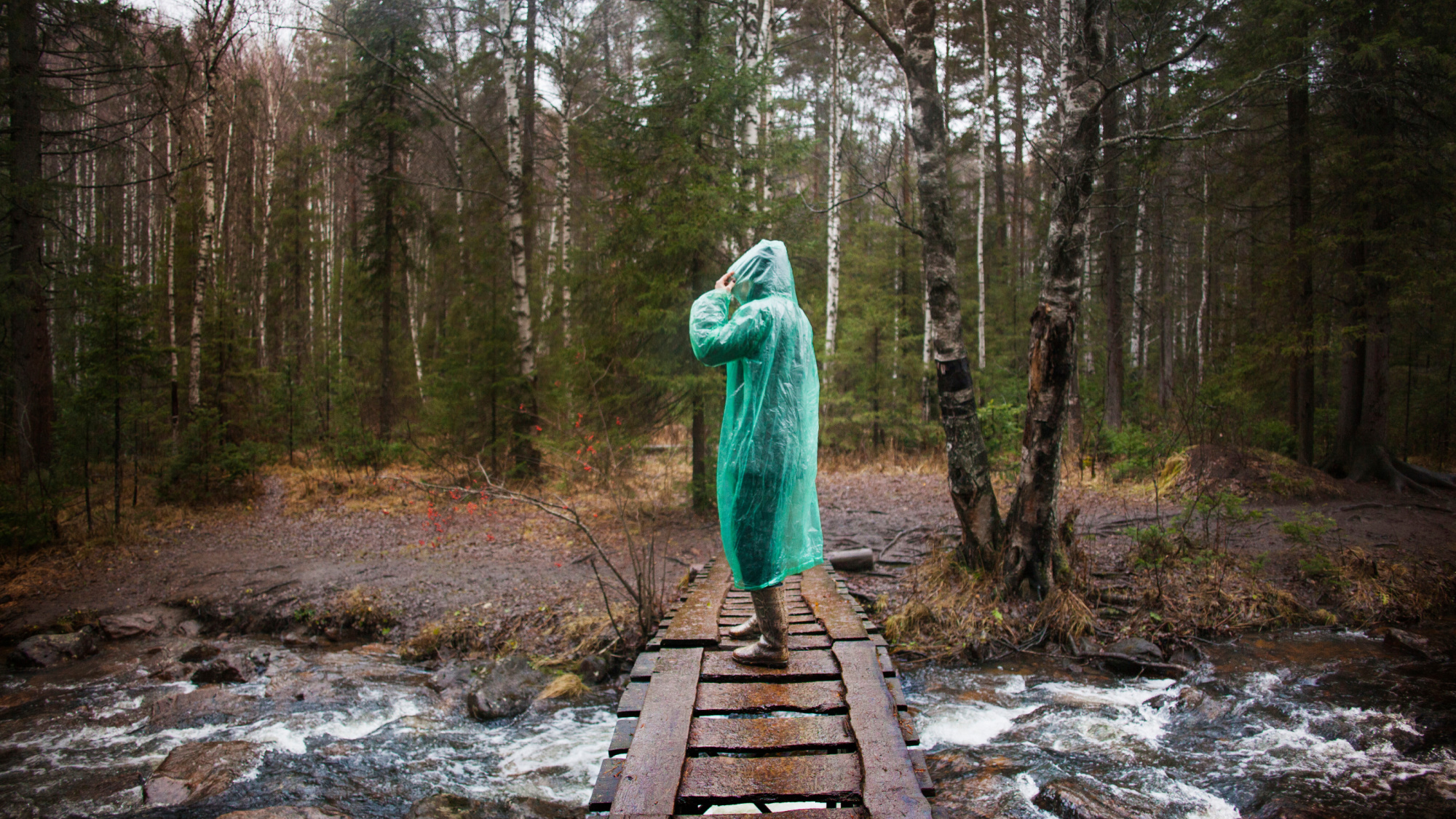
Cavan Images / Adobe Stock
With so many options, it’s often hard to decide the best coat or pants for you. First, consider the differences between water resistant and waterproof, then consider your upcoming uses. Dwyer recommends sitting down and thinking about what you need before you even go to a store to try anything on. Often the thinnest and softest materials may have the least amount of protection, and the stiffer, bulkier jackets will keep you warm and dry through many days outside. Think about what you want and buy accordingly.

